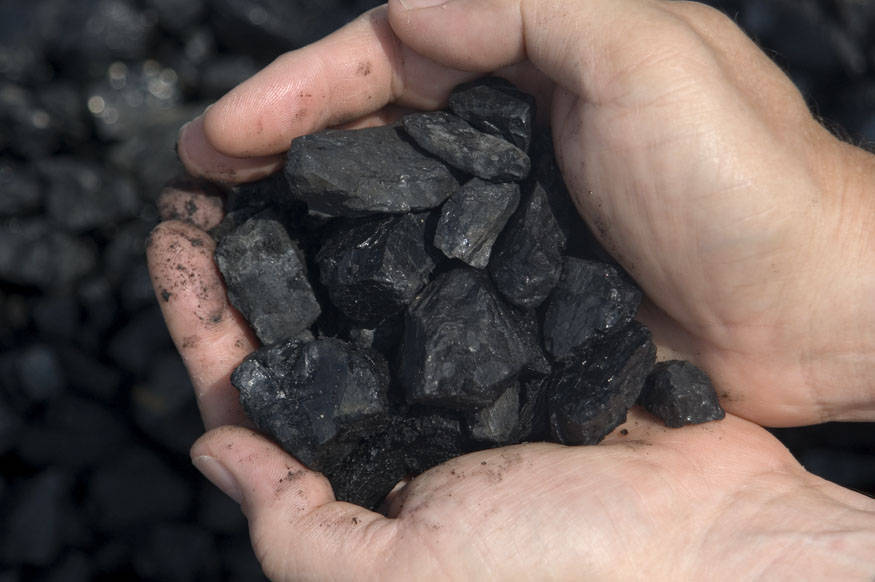Vivek Kaul
The trade unions which represent the workers of Coal India Ltd, which produces most of the coal mined in India, are against the government’s recent decision to sell 10% stake in the company. They have even threatened to go on strike. This is primarily because they are against even a partial privatisation of what is still largely a government owned company.
The surprising thing though is that the back-door privatisation of Coal India has more or less already happened. Allow me to elaborate.
As on March 31, 2014, the company had a cash and bank balance of Rs 52,390 crore. This despite having paid the government a dividend of Rs 18,317.5 crore during the course of the year.
The question is how has the company been able to generate so much cash over the years? For this one has to look at some of the subsidiaries of Coal India. Take the case of Mahanadi Coalfield, the company earned a total revenue of Rs 12,033 crore during 2013-2014. On this it made an operating profit of Rs 5429.08 crore. This means an operating margin of a whopping 45.1%. Interestingly, the company had an operating margin of 51.3% in 2012-2013. This kind of margin is unheard of in government owned companies.
The company employs a little over 22,000 employees and produced 110.4 million tonnes of coal, which worked out to around 23.9% of the total coal produced by Coal India during the year.
Let’s take the case of another subsidiary, the Northern Coalfields Ltd. The company earned a total revenue of Rs 9303.88 crore. It earned an operating profit of Rs 3731.85 crore. This means an operating margin of 40.1%. This is a tad low in comparison to the operating margin of 54.2% that the company had earned in 2012-2013. The company produces around 14.8% of the total coal produced by Coal India and employees a little over 16,500 people.
The numbers clearly suggest that these two subsidiaries are fairly efficiently run. What is the secret behind that? In case of Mahanadi Coalfields a substantial amount of coal mining is outsourced to contractors. This helps the company mine coal at a very low cost as it helps keep employee costs low.
The coal mines of Northern Coalfields are highly mechanized. This along with outsourcing helps the company keep costs low and hence, generate a high operating margin. The profit generated by these two companies over the years has helped Coal India to push up its cash and bank balance to greater than Rs 50,000 crore. Interestingly, as on March 31, 2013, the cash and bank balance of the company had stood at Rs 62,236 crore. This fell after the company was forced to give a dividend of Rs 18,317.5 crore to the government.
It is interesting to compare the performance of Mahanadi Coalfields and Northern Coalfields with some of the older subsidiaries of Coal India like the Eastern Coalfields and Bharat Coking Coal, which operate largely in West Bengal and Jharkhand.
Eastern Coalfields employees more than 70,000 people, the highest among all the Coal India subsidiaries. It produces just 36.1 million tonnes or around 7.8% of the total coal produced by Coal India. Along similar lines, Bharat Coking Coal employees around 58,000 people and produces just 32.6 million tonnes or a little over 7% of the total coal produced by Coal India.
Employee cost forms a huge cost for both these companies and hence, the operating margins are a lower at 18% and 30.8%. One reason for the high employee cost is the fact that a lot of the mines operated by these companies are underground mines, where the technology used to mine coal is still very labour intensive.
Also, the trade unions are stronger in this party of the country and that is another reason why these companies employ so many people to produce a minuscule amount of coal in comparison to other subsidiaries of Coal India. It is interesting nonetheless to observe that the contractual expenses of Eastern Coalfields have risen by 117% since 2009-2010.
The broad level data for Coal India also shows a similar trend. The contractual expenses for the company stood at Rs 7812.71 crore for 2013-2014, a rise of around 48% from 2010-2011. What this clearly suggests is that Coal India is contracting out more and more of its work and that has helped the company. The annual report of the company points out that the contractual expenses have increased mainly due increased volume of contractual operations. This is one of the major reasons which has helped the company push its net profit from Rs 4696.1 crore in 2010-11 to Rs 15,008.5 crore in 2013-2014. And this in turn has translated into a huge hoard of cash.
To conclude, the latest annual report of the company does not give out any number to the proportion of the total coal, mined by the contractors. Nevertheless, people who follow the sector closely suggest that a substantial part of the coal being mined by Coal India is now through outsourcing. What this clearly shows is that the company has been privatised through the back-door, despite the resistance of the labour unions.
The article was originally published on Sep 22, 2014 on www.Firstbiz.com
(Vivek Kaul is the author of Easy Money trilogy. He tweets @kaul_vivek)
